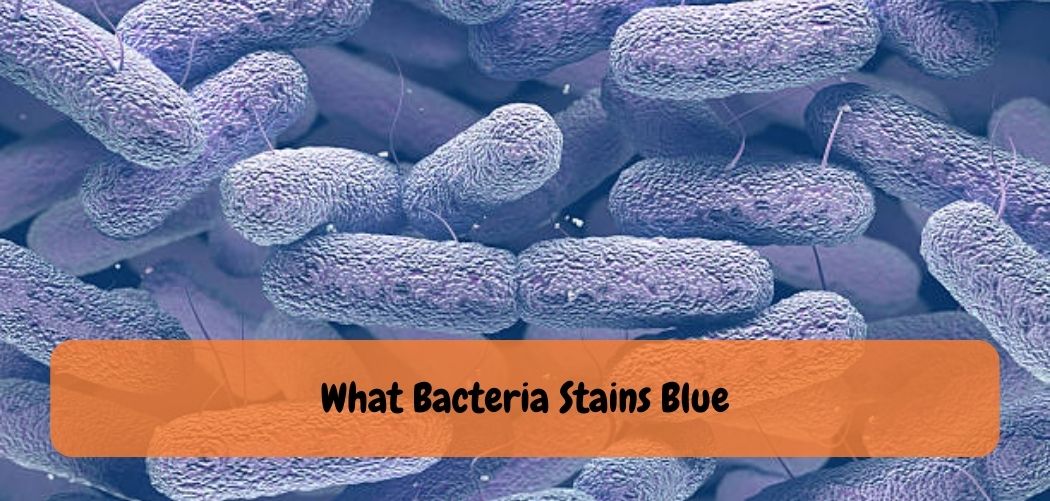Discover Which Bacteria Stains Blue: A Surprising Insight

The bacteria that stains blue is known as methylene blue staining bacteria. These bacteria are commonly found in the environment and can also be present in clinical specimens.
In the vast and diverse realm of microbiology, bacteria serve as the microscopic architects of life, shaping ecosystems and playing vital roles in various processes. These fascinating microorganisms come in an array of colors.
Offering glimpses into their distinct characteristics. Among the myriad of hues that bacteria can exhibit, the enigmatic world of blue-staining bacteria stands out, captivating scientists and researchers alike.
Bacteria staining is a fundamental technique employed in microbiology laboratories to enhance visualization and identification of microbial cells. By applying specific dyes or stains, scientists can accentuate certain features or structures within bacterial cells, enabling detailed microscopic examination.
Although a wide range of staining methods exists, it is the mesmerizing blue hue that has captured the curiosity and imagination of researchers across the globe.
How Bacteria Staining Works
The process of bacterial staining is a lab technique that allows scientists to visualize and identify specific types of bacteria under a microscope. The most commonly used method of bacterial staining is called the gram stain, which separates bacteria into two categories: gram-positive and gram-negative.
These categories are determined by the differences in their cell walls, which impacts how they react to certain stains. Crystal violet and iodine are used to stain all bacteria initially, but only the gram-positive bacteria retain the stain after being washed with alcohol.
The gram-negative bacteria are then stained with a red-colored counterstain, such as safranin, to make them visible under a microscope. By understanding these differences in bacterial staining and the characteristics of each category, scientists are able to more accurately identify and study bacteria.
The Guide: Bacteria Stains Blue
Bacteria staining plays a crucial role in microbiology, aiding scientists in visualizing and identifying microbial cells. Among the diverse range of staining techniques, blue staining stands out as an intriguing phenomenon.
This informative guide aims to unravel the mystery surrounding the bacteria that stain blue, exploring the reasons behind their distinctive coloration and the methods used to achieve it.
I. Understanding Bacterial Staining:
A. Purpose of bacterial staining
B. Common staining techniques
II. Factors Influencing Blue Staining:
A. Cellular structures and components:
- 1. Cell walls
- 2. Capsules
- 3. Intracellular structures
B. Chemical composition:
- 1. Presence of specific compounds
- 2. Binding affinity to blue dyes
C. Metabolic activities:
- 1. Secretion of pigments
- 2. Metabolism of specific substances
III. Blue-Staining Techniques:
A. Methylene Blue Staining:
- 1. Principle of methylene blue staining
- 2. Procedure for methylene blue staining
- 3. Examples of bacteria that stain blue with methylene blue
B. Toluidine Blue Staining:
1. Principle of toluidine blue staining
2. Procedure for toluidine blue staining
3. Examples of bacteria that stain blue with toluidine blue
C. Other Blue Staining Methods:
1. Crystal Violet Staining
2. Wright Staining
IV. Common Blue-Staining Bacteria:
A. Pseudomonas aeruginosa:
- 1. Description of Pseudomonas aeruginosa
- 2. Blue staining characteristics
- 3. Significance in microbiology and medicine
B. Escherichia coli:
1. Description of Escherichia coli
2. Blue staining characteristics
3. Significance in microbiology and medicine
C. Bacillus spp.:
1. Description of Bacillus spp.
2. Blue staining characteristics
3. Significance in microbiology and medicine
V. Other Factors Affecting Staining Results:
- A. Staining techniques and protocols
- B. Environmental factors
- C. Bacterial growth conditions
The Blue Staining Bacteria – A Surprising Insight
The blue staining bacteria are an interesting peculiarity that caught the attention of many microbiologists. These bacteria, also known as gram-positive bacteria, have taken the scientific community by surprise with their unique ability to stain blue instead of the usual red or purple.
Studying these microorganisms has shed light on a new understanding of their physiology and genetic makeup, revealing the process behind the blue staining. It is hypothesized that this staining occurs due to a specialized cell wall structure that traps the blue dye, providing valuable insights into the bacterial world.
Further research on this phenomenon holds the potential to expand our understanding of bacterial behavior and their possible medical applications.
Frequently Asked Questions For What Bacteria Stains Blue?
What Types Of Bacteria Stain Blue?
Studies have shown that gram-positive bacteria, such as staphylococcus aureus and streptococcus pyogenes, stain blue with the gram stain.
What Causes Bacteria To Stain Blue?
Bacteria stain blue when they retain the crystal violet stain in the gram stain due to their cell wall composition.
Are Blue-Staining Bacteria Harmful?
No, not all blue-staining bacteria are harmful. Some can be helpful, like the probiotic lactobacillus which can aid digestion.
Can Blue-Staining Bacteria Be Found In Food?
Yes, blue-staining bacteria like pseudomonas aeruginosa can grow on food and lead to spoilage. Proper food handling and storage can prevent this.
How Is The Gram Stain Used To Identify Blue-Staining Bacteria?
The gram stain procedure is use to differentiate bacteria based on their cell wall composition. Blue-staining bacteria have a thick peptidoglycan layer.
Conclusion
With the knowledge that some bacteria stains blue, it’s useful to know why we should care. Blue staining bacteria are often use in scientific research, including microbiology and genetics, as they can easily identifi and studi under a microscope.
These stains can also be applie in medical fields to help diagnose infections cause bacterial agents. Moreover, they are also use in environmental studies to test for bacteria in the soil, water and air. Whether you are a microbiology student, a medical professional, a scientist or just someone interested in bacteria, knowing the different types of bacteria stains, including blue, can be of great value.
By understanding more about the various bacteria stains, we can take a step closer to understanding the world of bacteria. While there is still much to learn, studying these microscopic organisms can lead to discoveries that can help prevent and treat infections and diseases caused by bacteria.
